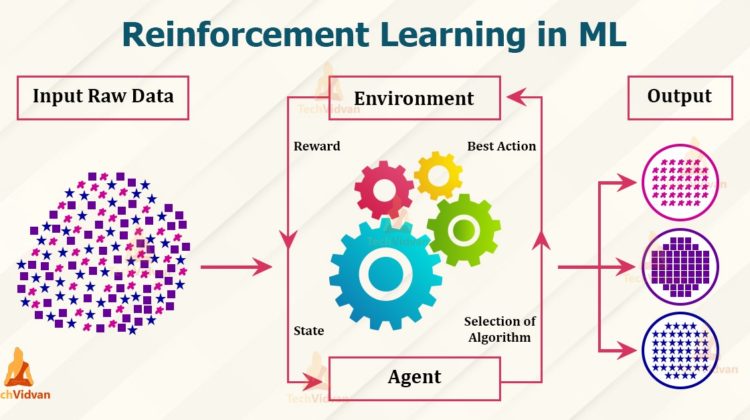
Reinforcement learning is an approach to machine learning that is inspired by behaviorist psychology. Reinforcement learning contrasts with other machine learning approaches in that the algorithm is not explicitly told how to perform a task, but works through the problem on its own.
Reinforcement learning differs from supervised learning in a way that in supervised learning the training data has the answer key with it so the model is trained with the correct answer itself whereas in reinforcement learning, there is no answer but the reinforcement agent decides what to do to perform the given task. In the absence of training data, it is bound to learn from its experience.
As an agent, it interacts with its environment and receives a reward state depending on how it performs. Conversely, the agent receives a penalty for performing incorrectly. The agent over time makes decisions to maximize its reward and minimize its penalty using dynamic programming.
Types of Reinforcement Learning
- Positive Reinforcement Learning is defined as when an event, occurs due to a particular behavior, increases the strength and the frequency of the behavior. In this type of Reinforcement Learning, the algorithm receives a type of reward for a certain result. In other words, here we try to add a reward for every good result in order to increase the likelihood of a good result.
- Negative Reinforcement Learning is defined as strengthening of behavior because a negative condition is stopped or avoided. In this type, we try to remove something negative in order to improve performance.
Advantages and Disadvantages of Reinforcement Learning
Advantages
- It can solve higher-order and complex problems.
- Due to it’s learning ability, it can be used with neural networks.
- Since the model learns constantly, a mistake made earlier would be unlikely to occur in the future.
- When it comes to creating simulators, object detection in automatic cars, robots, etc., reinforcement learning plays a great role in the models.
- Even when there is no training data, it will learn through the experience it has from processing the training data.
Disadvantages
- The usage of reinforcement learning models for solving simpler problems won’t be correct. The reason being, the models generally tackle complex problems. We will be wasting unnecessary processing power and space by using it for simpler problems.
- We need lots of data to feed the model for computation. Reinforcement Learning models require a lot of training data to develop accurate results. This consumes time and lots of computational power.
- When it comes to building models on real-world examples, the maintenance cost is very high. Like for building driverless vehicles, robots, we would require a lot of maintenance for both hardware and software.
